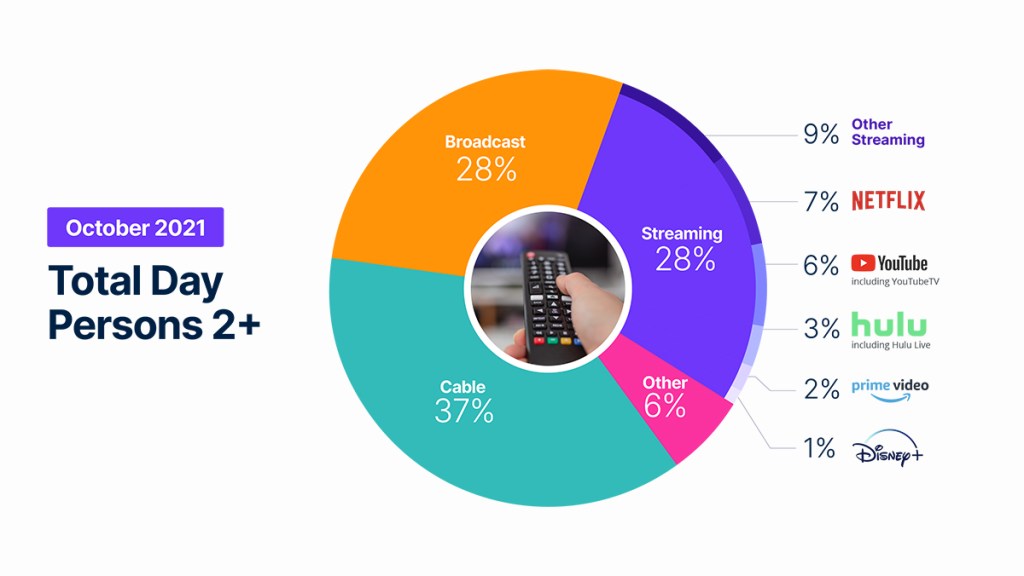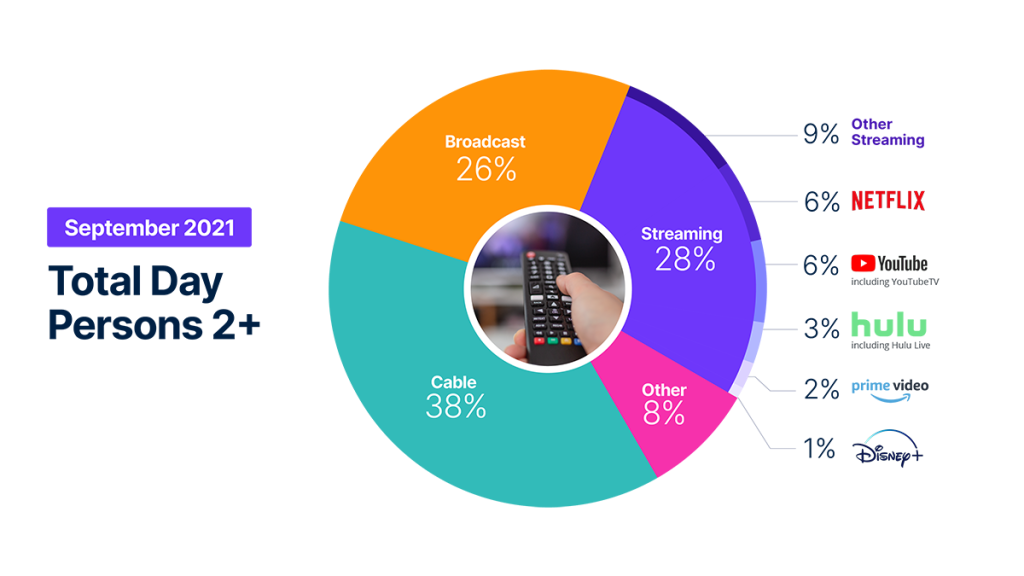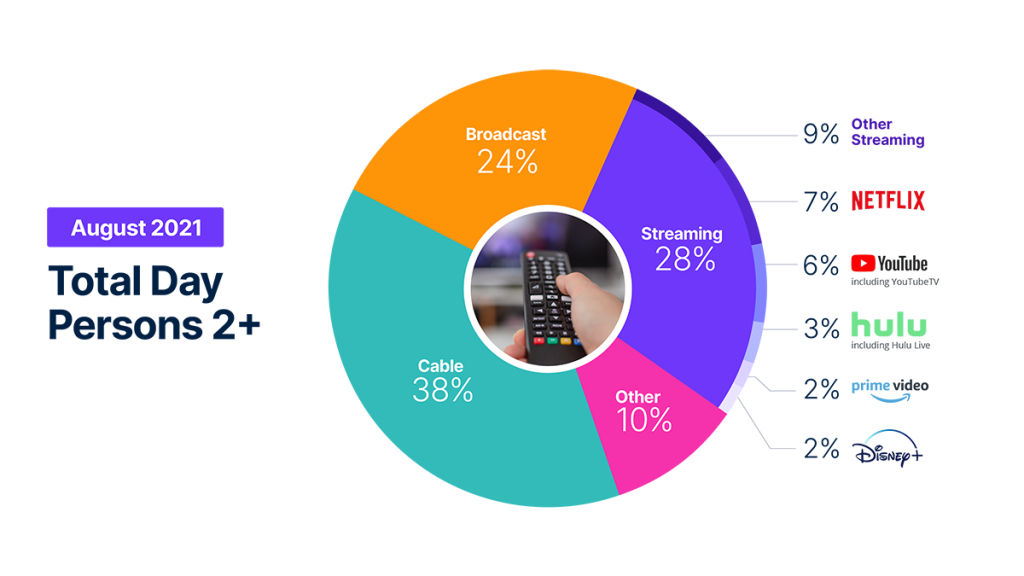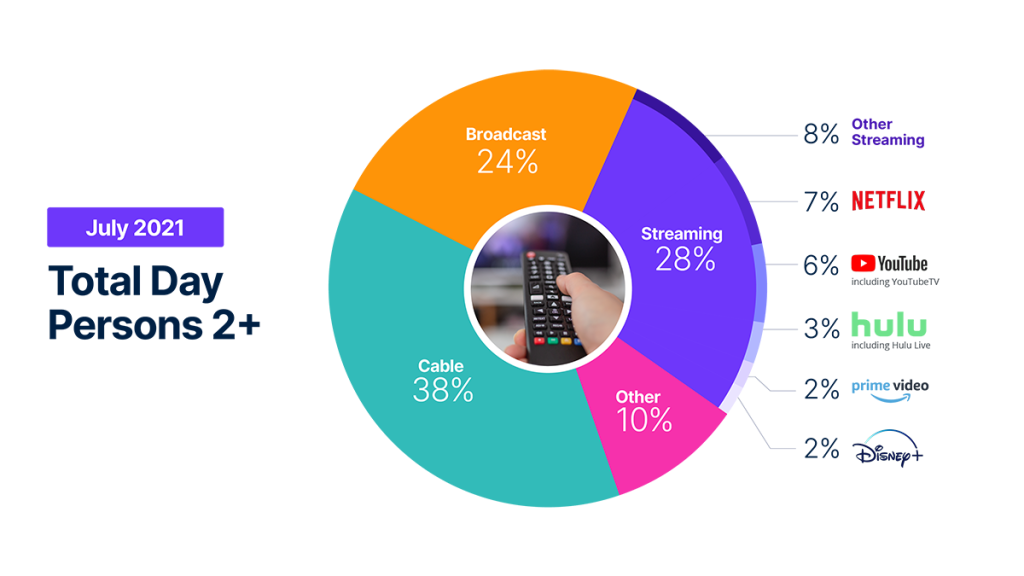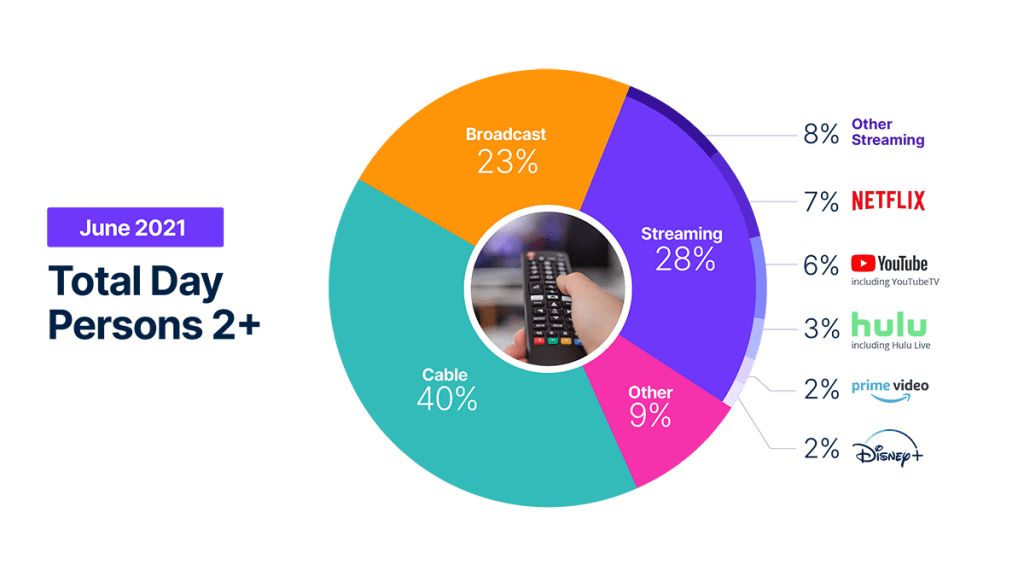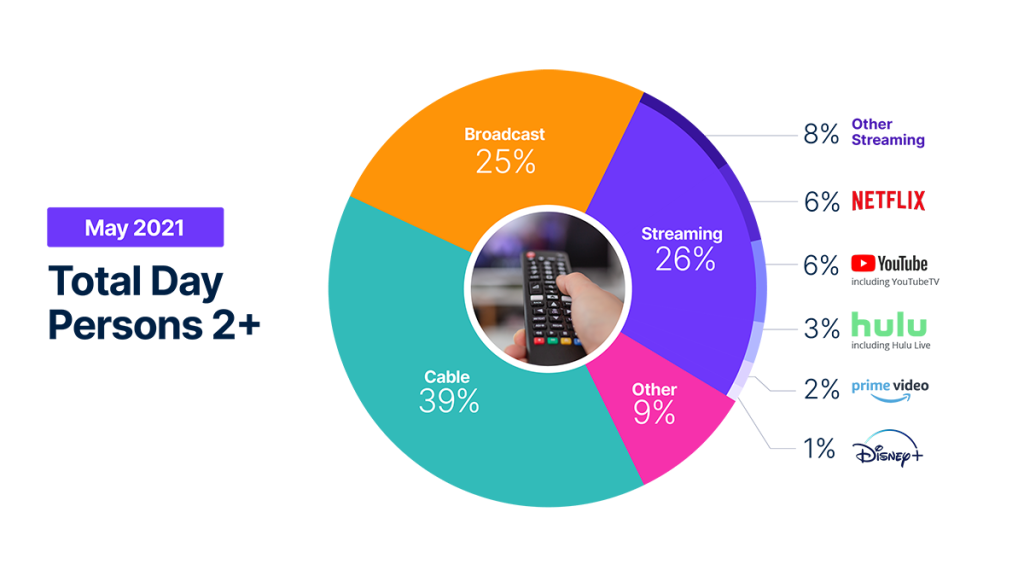Amid the many dynamics affecting TV usage, such as program releases, sports seasons and even the weather, few have the same effect as one of the most basic: time off. According to The Gauge, Nielsen’s total TV and streaming snapshot, the Thanksgiving holiday and time away from our daily routines inspired consumers to spend 5% more time with TV each week in November.
Despite the overall increase in total TV usage during November, the rising tide did not lift all ships evenly. Notably, the time away from school gave students the opportunity to spend more time playing video games (included in the “other” category, which gained a share point) and watching content on Disney+.
In terms total TV usage, there were three primary changes in November:
- Broadcast TV lost a share point, driven by dips in general drama (-12%) and sitcom (-7%) viewing.
- Sports viewing remained strong, with viewing up 7%—even without the World Series.
- The seasonal appetite for feature films drove a 12% increase in that category. The evening animation category was a big mover this month, driven by two perennial overperformers: The Grinch and Rudolph The Red Nosed Reindeer.
Among the streamers, Disney+ was the only platform where viewership drove a reported change, as the nearly 20% increase in viewing time helped the platform recapture a percentage point of total viewing. Two primary factors drove the increase: the additional availability of the platform’s key audience (kids) and the Disney+ Day release of Shang Chi and Jungle Cruise. Separately, Amazon Prime Video’s total share remained flat at 2%, but the platform did see an 8% increase in total minutes viewed compared with October.
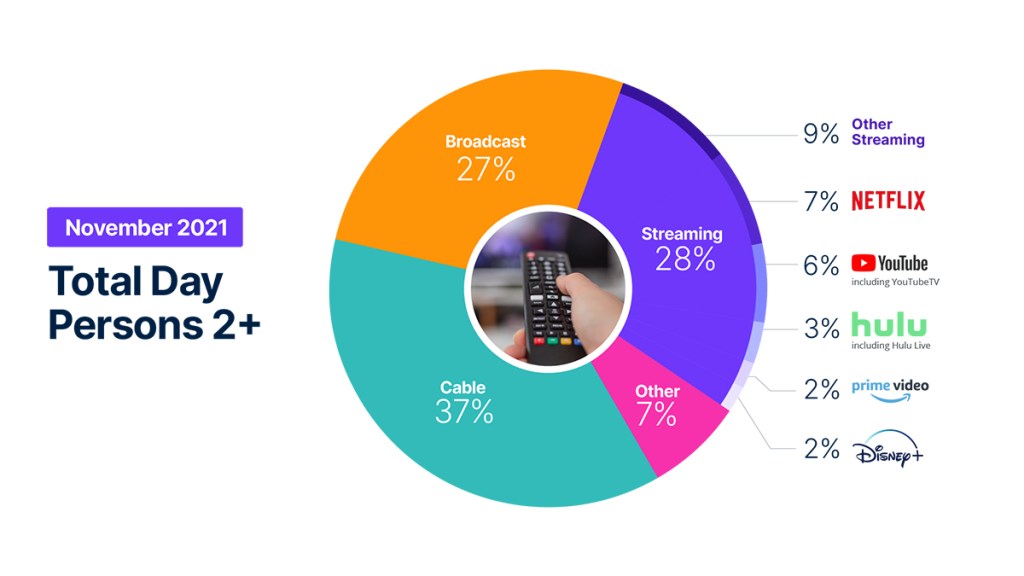
Watch the video to hear Brian Fuhrer, SVP, Product Strategy at Nielsen provide a behind the scenes look at some of the viewing changes underpinning The Gauge.
METHODOLOGY AND FREQUENTLY ASKED QUESTIONS
The Gauge provides a monthly macroanalysis of how consumers are accessing content across key television delivery platforms, including Broadcast, Streaming, Cable and Other sources. It also includes a breakdown of the major, individual streaming distributors. The chart itself shows the share by category and of total television usage by individual streaming distributors.
How is ‘The Gauge’ created?
The data for The Gauge is derived from two separately weighted panels and combined to create the graphic. Nielsen’s streaming data is derived from a subset of Streaming Meter-enabled TV households within the National TV panel. The linear TV sources (Broadcast and Cable), as well as total usage are based on viewing from Nielsen’s overall TV panel.
All the data is based on a specific time period for each viewing source. The data, representing a 5 week month, includes a combination of Live+7 for weeks 1 – 4 in the data time period and Live+3 for week 5. (Note: Live+7 includes live television viewing plus viewing up to seven days later. Live +3 includes television viewing plus viewing up to three days later.)
What is included in “Other”?
Within The Gauge, “Other” includes all other TV. This primarily includes all other tuning (unmeasured sources), unmeasured Video on Demand (VOD), Streaming through a cable set top box, Gaming, and other device (DVD Playback) use. Because Streaming via Cable Set Top Boxes does not credit respective streaming distributors, these are included in the “Other” category. Crediting individual streaming distributors from Cable Set Top Boxes is something Nielsen continues to pursue as we enhance our Streaming Meter technology.
What is included in “Other Streaming”?
Streaming platforms listed as “Other Streaming” includes any high-bandwidth video streaming on television that is not individually broken out.
Do you include live streaming on Hulu and YouTube?
Yes, Hulu includes viewing on Hulu Live and Youtube includes viewing on Youtube TV.
Encoded Live TV, aka encoded linear streaming, is included in both the Broadcast and Cable groups (linear TV) as well as under Streaming and other streaming e.g. Hulu Live, Youtube TV, Other Streaming MVPD/vMVPD apps. (Note: MVPD, or multichannel video programming distributor, is a service that provides multiple television channels. vMVPDs are distributors that aggregate linear (TV) content licensed from major programming networks and packaged together in a standalone subscription format and accessible on devices with a broadband connection.)
